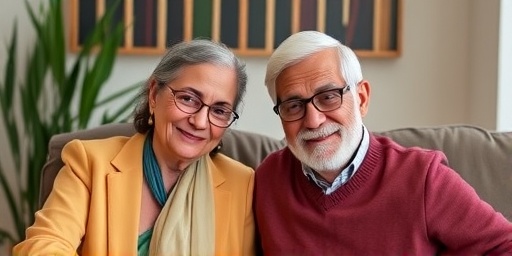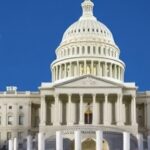SAN FRANCISCO, California – After 17 years building a life in the United States, Rajesh “Raj” Sharma, 48, and his wife Priya, 45, are packing up their Bay Area home and heading back to India. The tipping point? A staggering healthcare bill that exceeded $50,000 for a routine surgery, emblematic of the Healthcare costs crisis pushing even high-earning non-resident Indians (NRIs) toward relocation.
- Sharmas’ Silicon Valley Success Story Hits Healthcare Wall
- $50K Surgery Bill Exposes US Healthcare’s Hidden Traps for NRIs
- NRI Exodus Accelerates: Healthcare Tops Relocation Reasons
- India Beckons with Affordable Care and Familiarity for Returnees
- US Immigration Policies Face Scrutiny as NRIs Exit En Masse
The Sharmas, who arrived in 2007 on H-1B visas as tech professionals, represent a growing wave of NRIs disillusioned with America’s promise. “We loved the opportunities here, but the fear of medical bankruptcy overshadowed everything,” Raj told reporters exclusively. Their story underscores how Healthcare costs are reshaping immigration patterns in the United States, prompting thousands to reconsider their futures.
Sharmas’ Silicon Valley Success Story Hits Healthcare Wall
Raj and Priya Sharma’s journey began in the bustling tech hubs of Silicon Valley. Raj, a software engineer from Mumbai, landed a job at a major tech firm shortly after arriving. Priya, a data analyst, followed suit, securing a position that allowed them to buy a home in Sunnyvale and raise their two children, now teenagers.
Over 17 years, they climbed the corporate ladder. Raj became a senior architect earning over $200,000 annually, while Priya’s salary topped $150,000. They paid taxes, contributed to 401(k)s, and even sponsored green card applications. Yet, beneath the success lurked the specter of Healthcare costs. Employer-sponsored insurance covered basics, but deductibles, copays, and out-of-pocket expenses mounted.
“We budgeted meticulously, but one health scare changed everything,” Priya recounted. In 2023, Raj underwent appendectomy surgery. The insured cost? A $52,300 bill after insurance, including facility fees and anesthesiologist charges. This incident, coupled with Priya’s chronic condition requiring ongoing medications costing $1,200 monthly, made staying untenable.
- Annual family premiums: Averaged $25,000 pre-tax.
- Deductible: $8,000 per year, often unmet.
- Total healthcare spend (2023): Over $40,000, rivaling their mortgage.
The Sharmas aren’t alone. A 2024 Kaiser Family Foundation report reveals average family premiums hit $24,104 in 2024, up 7% from prior years, with workers paying 29% more out-of-pocket.
$50K Surgery Bill Exposes US Healthcare’s Hidden Traps for NRIs
The Sharma’s ordeal peaked with Raj’s surgery at a Silicon Valley hospital. What should have been a $15,000 procedure ballooned due to “surprise billing” – charges from out-of-network providers. Despite the No Surprises Act of 2022, gaps persist, especially for employer plans.
“We called every helpline, negotiated for months, but ended up paying $28,000 after insurance adjustments,” Raj said. This, atop premiums, equated to 25% of their combined income – far above India’s negligible public healthcare costs.
Experts highlight systemic issues. Dr. Elena Vasquez, health policy analyst at Stanford University, notes: “Healthcare costs in the US are 18% of GDP, double most developed nations. For immigrants on visas, lacking Medicare eligibility until 65, it’s a gamble.”
Comparative stats paint a stark picture:
| Metric | United States | India |
|---|---|---|
| Average Appendectomy Cost | $33,000 | $1,500 |
| Family Insurance Premium | $24,000/year | $500/year (private) |
| Life Expectancy Impact | Medical debt causes 530,000 bankruptcies/year | Universal schemes cover 500M+ |
For NRIs like the Sharmas, green card backlogs – averaging 10+ years for Indians – mean prolonged exposure without safety nets.
NRI Exodus Accelerates: Healthcare Tops Relocation Reasons
The Sharmas’ relocation mirrors a trend. India’s Ministry of External Affairs reports over 2 million NRIs returned from the US between 2020-2024, up 40% from the decade prior. A 2024 NASSCOM survey found 62% cite healthcare costs as primary, surpassing even job markets.
“Post-COVID, awareness spiked. Many saw parents in India get world-class care at fraction costs,” said Amit Gupta, president of the Bay Area Indo-American Association. Gupta notes 15,000+ NRIs in California alone relocated last year.
- 2007-2019: NRI inflows peaked with H-1B boom.
- 2020-2022: Pandemic exposed vulnerabilities; premiums surged 50%.
- 2023-2024: Record outflows; India’s Ayushman Bharat scheme covers 500 million poor with free care up to $6,000/person/year.
Other NRIs echo the Sharmas. Neha Patel, a former Google engineer now in Bangalore, shared: “My family’s cancer treatment here cost $300K; in India, $20K with same outcomes.” Such testimonials fuel online forums like Team-BHP and Reddit’s r/NRI, buzzing with relocation advice.
India Beckons with Affordable Care and Familiarity for Returnees
The Sharmas are resettling in Pune, where Raj secured a remote role with an Indian multinational at 70% US salary but zero healthcare worries. Priya plans consulting, leveraging US experience.
India’s healthcare evolution aids. Private chains like Apollo Hospitals offer US-trained doctors, English services, and costs 10-20% of American equivalents. Public schemes like Ayushman provide free care, while expat-friendly cities boast international schools matching California standards.
“Quality of life is better – no medical debt stress,” Priya said. Their children, US-born, will attend IB schools in India, dual-citizenship intact.
Broader perks include family proximity, lower living costs (Pune rents: $800 vs. Sunnyvale’s $4,000), and booming sectors like IT, EVs, semiconductors drawing NRI talent.
US Immigration Policies Face Scrutiny as NRIs Exit En Masse
As stories like the Sharmas’ proliferate, policymakers grapple with fallout. US tech firms lament talent drain; Google, Meta report 10-15% NRI attrition to India in 2024.
Immigration experts predict shifts. “Healthcare costs could deter future immigration from cost-sensitive nations like India, China,” warns Brookings Institution’s Darrell West. Proposals include expanding Medicare for long-term visa holders or capping premiums.
Yet, challenges loom. With 1.2 million Indian green card waiters, frustration mounts. President Biden’s 2024 executive order easing H-1B spousal work helps marginally, but core issues persist.
Looking ahead, the Sharmas urge NRIs: “Weigh total costs beyond salary.” Their relocation signals a reversal in United States immigration flows, potentially costing billions in talent and taxes. India gains, but America risks losing its innovative edge if reforms lag.
For NRIs pondering moves, resources like India’s ‘Vande Bharat’ repatriation flights and NRI helplines ease transitions. As Raj signs off: “America gave us dreams; India offers reality.”









